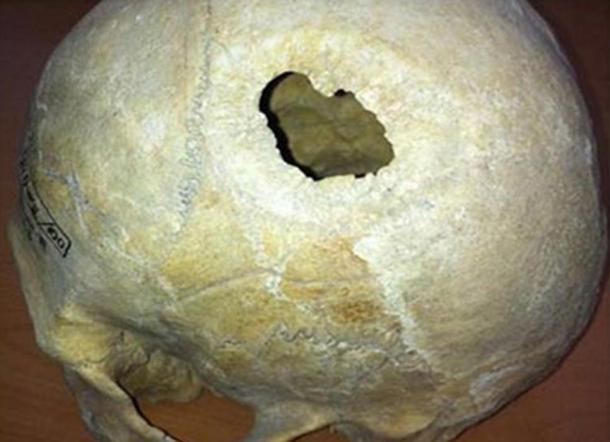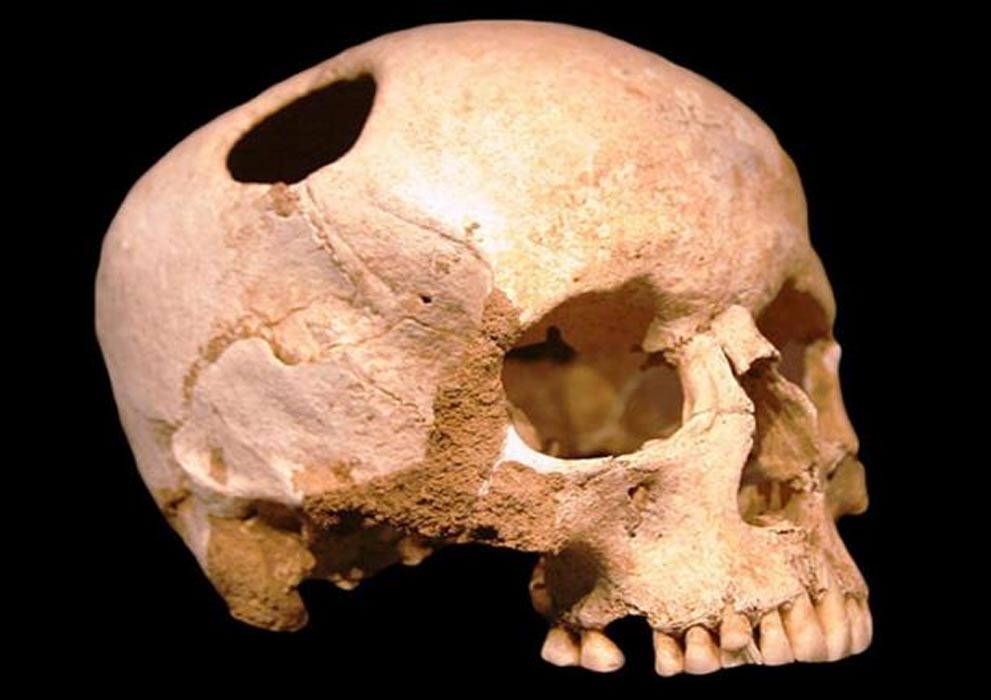7,000-Year-Old Head Surgery: One of the Oldest Trepanned Skulls Discovered in Sudan
A remarkable discovery was made during excavations in a Neolithic settlement in Omdurman in Sudan – an ancient skeleton with signs of trepanation (drilling a hole in the skull), dating back around 7,000 years. The researchers reported that this is one of the oldest known cases of trepanation of a skull in Northern Africa.
The discovery was made by a team led by Dr. Maciej Jórdeczka from the Institute of Archaeology and Ethnology (IAE) PAS in Poznań, during excavations in the ancient Khor Shambat settlement, which was located near the Nile on a small hill. It was inhabited since the Khartoum Mesolithic period (8,000 - 5,000 years BC).
According to PAP, the skull dates to between the 5 th and 4 th millennium BC. The deceased had been buried within the settlement, a widely practiced custom. The results of the bone analysis suggest that the skull belonged to man who died at quite an advanced age for this period – he was 55-65 years old – and suffered a number of diseases typical of this age, including tooth decay (periodontitis). The researchers claim that the average age of people 7,000 years ago was significantly lower.
Trepanation is a procedure that involves making a hole in the skull for medical purposes and is still practiced today. However, in ancient times, it is believed that the procedure was also used for ‘magical’ or religious purposes. Researchers were not able to determine why this individual might have undergone the procedure, which resulted in a circular hole in his skull measuring 2 cm in diameter. According to Dr. Łukasz Maurycy Stanaszek, an anthropologist from the National Archaeological Museum in Warsaw, the man did not survive the trepanation, as evidenced by the fact that the wound had not healed. Nevertheless, he pointed out that the hole had been made proficiently, and appears to have been created with special scraping tools like knives, drills or flint-bone scrapers.
The trepanation is not the only reason why the burial is significant. The body of the man was covered with ochre, a natural dye that has been used since the Paleolithic period. The man was buried in the fetal position with his knees pulled up to his forehead. A clamshell had been placed on his forehead.
"The real treasure for us is the ability to trace the layers formed by human activity over thousands of years. In the case of central Sudan it is an exception - the vast majority of sites, both Mesolithic and Neolithic, has no stratigraphy. Khor Shambat will therefore give us a new perspective of the settlement chronology" Dr. Jórdeczka told PAP.

The grave of a man subjected to trepanation. Photo: M. Jórdeczka
Many civilizations carried out trepanation of skulls in ancient times. One of the most impressive discoveries was made last year in Siberia. As Mark Miller reported in February 4, 2015:
''Russian scientists are examining ancient human skulls and testing bronze tools on a modern skull to see how doctors in Siberia more than 2,000 years ago performed brain surgery on three adults. It is still unknown what anesthetic, if any, was used to dull the pain during the surgery.
- Eight Impressive but Terrifying Cases of Ancient Surgery
- Ritually Motivated Traditions May Be Behind Holes Drilled into Skulls in Prehistoric Russia
- Ancient Pazyryk nomads carried out highly advanced cranial surgery in Siberia

Skull of male with trepanation, who had a hereditary deformation of the skull (Credit: Institute of Archaeology – Will Stewart)
The Siberian Times reports that the surgeries were carried out using the same principles as those found in the Hippocratic Corpus, which requires strict adherence to medical ethics and techniques. Hippocrates wrote the oath around 500 B.C.
"Prominent Novosibirsk neurosurgeon Aleksei Krivoshapkin, who was asked to examine the skulls, said: 'Honestly, I am amazed. We suspect now that in the time of Hippocrates, Altai people could do a very fine diagnosis and carry out skilful trepanations and fantastic brain surgery," according to The Siberian Times.
The ancient doctor or doctors who performed the surgeries did them at a location on the skull that minimized damage to the brain and assured longer survival. Remarkably, it appears one of the men lived for years after the trepanation surgery because some of the bone grew back.''

Detail from The Extraction of the Stone of Madness, a painting by Hieronymus Bosch depicting trepanation (c.1488–1516). (Public Domain)
Top image: Representational image showing trepanation. A trepanated skull of a girl from the Neolithic period (3500 BC); the patient survived. Natural History Museum, Lausanne, Switzerland. (CC BY SA 2.0)


















